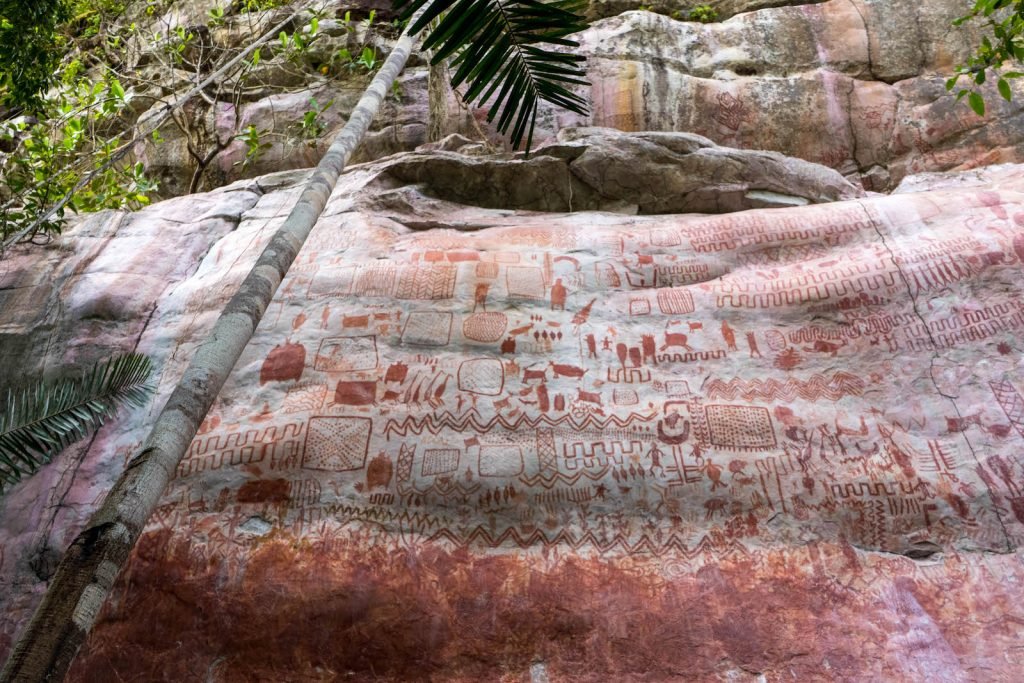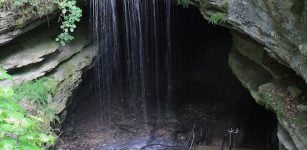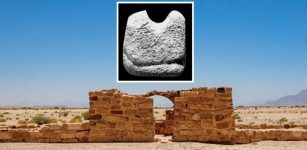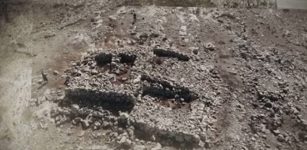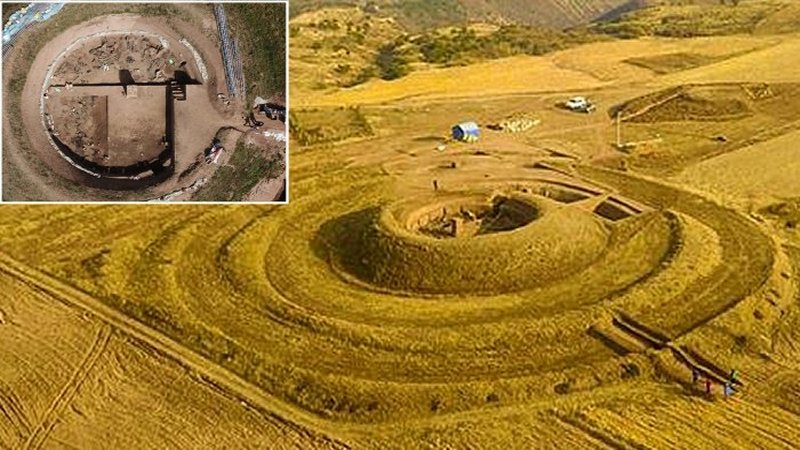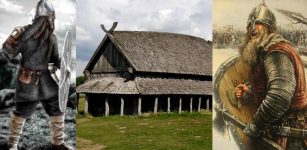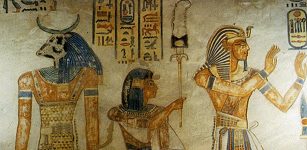Never-Before-Seen Amazon Rock Art Reveal People Lived With Giant Ice Age Animals
Jan Bartek – MessageToEagle.com – Thousands of never-before-seen rock art carvings have been discovered in the Amazon Forest. These pictures are very interesting because they are among the oldest depictions of people interacting with now-extinct giant Ice Age animals.
A science team uncovered the historical artwork, which is now being called the ‘Sistine Chapel of the ancients’, on a cliff in the Chiribiquete National Park, Colombia.
This section found in the Amazon forest depicts various animals and geometric designs. Credit: José Iriarte
These ancient carvings depict huge creatures, including mastodons. Usually, the only clues about their appearance are skeletal remains.
According to the team that published the description of tens of thousands of ice age paintings, this is one of the largest collections of rock art found in South America. The recorded drawings, likely first made around 12,600 and 11,800 years ago, are on three rock shelters on hills in the Colombian Amazon. The paintings, identified during landscape surveys, also depict geometric shapes, human figures, and handprints, as well as hunting scenes and people interacting with plants, trees, and savannah animals.
The vibrant red pictures were produced over a period of hundreds, or possibly thousands, of years. Some are so high, and inaccessible, special ladders crafted from forest resources would have been needed and they would have been obscured from view for anyone visiting the rock shelter.
The team uncovered the historical artwork, which is now being called the ‘Sistine Chapel of the ancients’, on cliff faces last year in the Chiribiquete National Park, Colombia. @Wild Blue Media
There are drawings of deer, tapirs, alligators, bats, monkeys, turtles, serpents, and porcupines, as well as what appears to be Ice Age megafauna. These now-extinct animals are depicted in rock art in Central Brazil, but experts believe these drawings are more realistic. There are depictions of creatures resembling a giant sloth, mastodon, camelids, horses, and three-toe ungulates with trunks. These native animals all became extinct, probably because of a combination of climate change, the loss of their habitat, and hunting by humans.
The pre-Columbian rock art at Cerro Azul in Guaviare state, Colombia dates back around 12,000 years. Photo by Marie-Claire Thomas, courtesy Channel 4.
The paintings, on specially prepared rock walls of the Serranía La Lindosa, on the northern edge of the Colombian Amazon, is further evidence of the impact early human communities had on the Amazon’s biodiversity and their adaption to climate change. At the time the drawings were made temperatures were rising, starting the transformation of the area from a mosaic landscape of patchy savannahs, thorny scrub, gallery forests and tropical forest with montane elements into the broadleaf tropical Amazon forest of today.
The rock shelters are far from modern settlements and trails but were known to some local communities, who helped researchers explore them.
“These really are incredible images, produced by the earliest people to live in western Amazonia. They moved into the region at a time of extreme climate change, which was leading to changes in vegetation and the make-up of the forest. The Amazon was still transforming into the tropical forest we recognize today.
Researchers believe this rock art depicts a giant sloth (a); a mastodon (b); a camelid (c); horses (d and e); and a three-toed ungulate with a trunk (f). Credit: José Iriarte
The paintings give a vivid and exciting glimpse into the lives of these communities. It is unbelievable to us today to think they lived among, and hunted, giant herbivores, some which were the size of a small car,” Mark Robinson from the University of Exeter said.
The rock shelters are exposed to the elements, meaning other paintings in the Amazon discovered by experts have been damaged and the pictures are unclear. Communities exfoliated, or peeled, the rock using fire to create smooth surfaces for their art.
These new discoveries are in shelters more protected through overhanging rock, or the wind and rain blowing in a different direction.
Professor Iriarte said: “These rock paintings are spectacular evidence of how humans reconstructed the land, and how they hunted, farmed and fished. It is likely art was a powerful part of the culture and a way for people to connect socially. The pictures show how people would have lived amongst giant, now extinct, animals, which they hunted.”
See also: More Archaeology News
Experts carried out the excavations in 2017 and 2018. The largest set of paintings was found at Cerro Azul, where there is a total of 12 panels and thousands of individual pictographs depicting humans, animals, plants, handprints, and geometric shapes. Paintings at Cerro Montoya and Limoncillos were more faded.
The discovery features in new series on the Amazon, coming to Channel 4 in the first week in December—Jungle Mystery: Lost Kingdoms of The Amazon. Fronted by Ella Al Shamahi, the series explores lost civilizations and uncovers never seen before hidden ancient settlements and rock art.
Written by Jan Bartek – MessageToEagle.com – AncientPages.com Staff Writer



